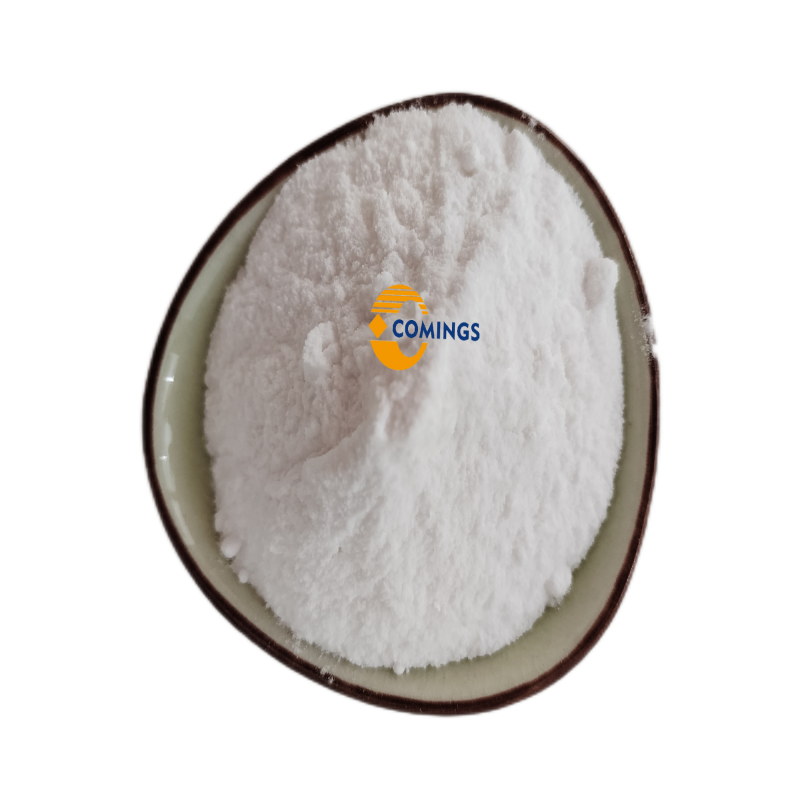-
Categories
-
Pharmaceutical Intermediates
-
Active Pharmaceutical Ingredients
-
Food Additives
- Industrial Coatings
- Agrochemicals
- Dyes and Pigments
- Surfactant
- Flavors and Fragrances
- Chemical Reagents
- Catalyst and Auxiliary
- Natural Products
- Inorganic Chemistry
-
Organic Chemistry
-
Biochemical Engineering
- Analytical Chemistry
-
Cosmetic Ingredient
- Water Treatment Chemical
-
Pharmaceutical Intermediates
Promotion
ECHEMI Mall
Wholesale
Weekly Price
Exhibition
News
-
Trade Service
Editor's note iNature is China's largest academic public account.
It is jointly created by doctoral teams from Tsinghua University, Harvard University, Chinese Academy of Sciences and other units.
The iNature talent public account is now launched, focusing on talent recruitment, academic progress, and scientific research information.
Long press or scan the QR code below to follow us
.
Diabetes prevalence in iNature China rose from less than 1% in the 1980s to nearly 11% in 2013
.
In 2013, China reported the largest number of people with diabetes and ranked second in global spending on diabetes and its complications
.
To date, no nationally representative study with a consistent study design has comprehensively investigated trends in the prevalence, treatment, and risk factors of diabetes in China
.
On December 28, 2021, Wu Jing from the Chinese Center for Disease Control and Prevention and Wang Youfa from Xi'an Jiaotong University published a research paper titled "Prevalence and Treatment of Diabetes in China, 2013-2018" online in the top international medical journal JAMA (IF=56).
, the study collected cross-sectional nationally representative survey data of adults 18 years or older in mainland China from 170,287 participants in 2013-2014 and 173,642 participants in 2018-2019
.
Fasting blood glucose and hemoglobin A1c levels were measured in all participants
.
A 2-hour oral glucose tolerance test was administered to all participants without a diagnosis of diabetes
.
The primary outcome was diabetes and prediabetes as defined by American Diabetes Association criteria
.
Secondary outcomes were awareness, treatment and control of diabetes and prevalence of risk factors
.
In 2013, the median age was 55.
8 years (IQR, 46.
4-65.
2 years), and the weighted proportion of women was 50.
0%; in 2018, the median age was 51.
3 years (IQR, 42.
1-61.
6 years), and the weighted proportion of women was 49.
5%
.
The estimated prevalence of diabetes increased from 10.
9% (95% CI, 10.
4%-11.
5%) in 2013 to 12.
4% (95% CI, 11.
8%-13.
0%) in 2018 (P < .
001)
.
The estimated prevalence of prediabetes was 35.
7% (95% CI, 34.
2%-37.
3%) in 2013 and 38.
1% (95% CI, 36.
4%-39.
7%) in 2018 (P = .
07)
.
In 2018, among adults with diabetes, 36.
7% (95% CI, 34.
7%-38.
6%) reported being aware of their condition and 32.
9% (95% CI, 30.
9%-34.
8%) reported being on treatment; 50.
1% (95%) % CI, 47.
5%-52.
6%) treated patients were adequately controlled, and these rates did not change significantly from 2013
.
The prevalence of low physical activity, high intake of red meat, and overweight and obesity increased significantly from 2013 to 2018
.
In conclusion, in this survey study, the estimated prevalence of diabetes was high and increased from 2013 to 2018, and the estimated prevalence of adequate treatment did not improve significantly
.
Prevention and control of non-communicable diseases are public health priorities worldwide
.
However, data show a steady rise in the incidence of non-communicable diseases, especially obesity and diabetes, in many countries
.
The prevalence of diabetes in China rose from less than 1% in the 1980s to nearly 11% in 2013
.
In 2013, China reported the largest number of people with diabetes and ranked second in global spending on diabetes and its complications
.
In addition, the prediabetic patient population represents a large number of patients at risk for diabetes
.
Previous studies have shown that diabetes awareness, treatment, and control rates are lower in China compared to the United States
.
Previous national surveillance data described the prevalence and treatment of diabetes in China in 2013
.
Another survey report estimated that the prevalence of diabetes was 11.
2% in 2015 and the prevalence of prediabetes was 35.
2%
.
The prevalence, awareness, and treatment of diabetes vary among populations
.
Socioeconomic and behavioral factors (eg, diet, smoking) may be responsible for this change
.
Behavioral factors are important variables in diabetes prevention and management
.
China has launched a public health campaign to promote healthy behaviors, including tobacco control, healthy eating and physical activity
.
To date, no nationally representative study with a consistent study design has comprehensively investigated trends in the prevalence, treatment, and risk factors of diabetes in China
.
The study collected cross-sectional nationally representative survey data of adults 18 years or older in mainland China from 170,287 participants in 2013-2014 and 173,642 participants in 2018-2019
.
Fasting blood glucose and hemoglobin A1c levels were measured in all participants
.
A 2-hour oral glucose tolerance test was administered to all participants without a diagnosis of diabetes
.
The primary outcome was diabetes and prediabetes as defined by American Diabetes Association criteria
.
Secondary outcomes were awareness, treatment and control of diabetes and prevalence of risk factors
.
In 2013, the median age was 55.
8 years (IQR, 46.
4-65.
2 years), and the weighted proportion of women was 50.
0%; in 2018, the median age was 51.
3 years (IQR, 42.
1-61.
6 years), and the weighted proportion of women was 49.
5%
.
The estimated prevalence of diabetes increased from 10.
9% (95% CI, 10.
4%-11.
5%) in 2013 to 12.
4% (95% CI, 11.
8%-13.
0%) in 2018 (P < .
001)
.
The estimated prevalence of prediabetes was 35.
7% (95% CI, 34.
2%-37.
3%) in 2013 and 38.
1% (95% CI, 36.
4%-39.
7%) in 2018 (P = .
07)
.
In 2018, among adults with diabetes, 36.
7% (95% CI, 34.
7%-38.
6%) reported being aware of their condition and 32.
9% (95% CI, 30.
9%-34.
8%) reported being on treatment; 50.
1% (95%) % CI, 47.
5%-52.
6%) treated patients were adequately controlled, and these rates did not change significantly from 2013
.
The prevalence of low physical activity, high intake of red meat, and overweight and obesity increased significantly from 2013 to 2018
.
In conclusion, in this survey study, the estimated prevalence of diabetes was high and increased from 2013 to 2018, and the estimated prevalence of adequate treatment did not improve significantly
.
Reference message: https://jamanetwork.
com/journals/jama/article-abstract/2787545
It is jointly created by doctoral teams from Tsinghua University, Harvard University, Chinese Academy of Sciences and other units.
The iNature talent public account is now launched, focusing on talent recruitment, academic progress, and scientific research information.
Long press or scan the QR code below to follow us
.
Diabetes prevalence in iNature China rose from less than 1% in the 1980s to nearly 11% in 2013
.
In 2013, China reported the largest number of people with diabetes and ranked second in global spending on diabetes and its complications
.
To date, no nationally representative study with a consistent study design has comprehensively investigated trends in the prevalence, treatment, and risk factors of diabetes in China
.
On December 28, 2021, Wu Jing from the Chinese Center for Disease Control and Prevention and Wang Youfa from Xi'an Jiaotong University published a research paper titled "Prevalence and Treatment of Diabetes in China, 2013-2018" online in the top international medical journal JAMA (IF=56).
, the study collected cross-sectional nationally representative survey data of adults 18 years or older in mainland China from 170,287 participants in 2013-2014 and 173,642 participants in 2018-2019
.
Fasting blood glucose and hemoglobin A1c levels were measured in all participants
.
A 2-hour oral glucose tolerance test was administered to all participants without a diagnosis of diabetes
.
The primary outcome was diabetes and prediabetes as defined by American Diabetes Association criteria
.
Secondary outcomes were awareness, treatment and control of diabetes and prevalence of risk factors
.
In 2013, the median age was 55.
8 years (IQR, 46.
4-65.
2 years), and the weighted proportion of women was 50.
0%; in 2018, the median age was 51.
3 years (IQR, 42.
1-61.
6 years), and the weighted proportion of women was 49.
5%
.
The estimated prevalence of diabetes increased from 10.
9% (95% CI, 10.
4%-11.
5%) in 2013 to 12.
4% (95% CI, 11.
8%-13.
0%) in 2018 (P < .
001)
.
The estimated prevalence of prediabetes was 35.
7% (95% CI, 34.
2%-37.
3%) in 2013 and 38.
1% (95% CI, 36.
4%-39.
7%) in 2018 (P = .
07)
.
In 2018, among adults with diabetes, 36.
7% (95% CI, 34.
7%-38.
6%) reported being aware of their condition and 32.
9% (95% CI, 30.
9%-34.
8%) reported being on treatment; 50.
1% (95%) % CI, 47.
5%-52.
6%) treated patients were adequately controlled, and these rates did not change significantly from 2013
.
The prevalence of low physical activity, high intake of red meat, and overweight and obesity increased significantly from 2013 to 2018
.
In conclusion, in this survey study, the estimated prevalence of diabetes was high and increased from 2013 to 2018, and the estimated prevalence of adequate treatment did not improve significantly
.
Prevention and control of non-communicable diseases are public health priorities worldwide
.
However, data show a steady rise in the incidence of non-communicable diseases, especially obesity and diabetes, in many countries
.
The prevalence of diabetes in China rose from less than 1% in the 1980s to nearly 11% in 2013
.
In 2013, China reported the largest number of people with diabetes and ranked second in global spending on diabetes and its complications
.
In addition, the prediabetic patient population represents a large number of patients at risk for diabetes
.
Previous studies have shown that diabetes awareness, treatment, and control rates are lower in China compared to the United States
.
Previous national surveillance data described the prevalence and treatment of diabetes in China in 2013
.
Another survey report estimated that the prevalence of diabetes was 11.
2% in 2015 and the prevalence of prediabetes was 35.
2%
.
The prevalence, awareness, and treatment of diabetes vary among populations
.
Socioeconomic and behavioral factors (eg, diet, smoking) may be responsible for this change
.
Behavioral factors are important variables in diabetes prevention and management
.
China has launched a public health campaign to promote healthy behaviors, including tobacco control, healthy eating and physical activity
.
To date, no nationally representative study with a consistent study design has comprehensively investigated trends in the prevalence, treatment, and risk factors of diabetes in China
.
The study collected cross-sectional nationally representative survey data of adults 18 years or older in mainland China from 170,287 participants in 2013-2014 and 173,642 participants in 2018-2019
.
Fasting blood glucose and hemoglobin A1c levels were measured in all participants
.
A 2-hour oral glucose tolerance test was administered to all participants without a diagnosis of diabetes
.
The primary outcome was diabetes and prediabetes as defined by American Diabetes Association criteria
.
Secondary outcomes were awareness, treatment and control of diabetes and prevalence of risk factors
.
In 2013, the median age was 55.
8 years (IQR, 46.
4-65.
2 years), and the weighted proportion of women was 50.
0%; in 2018, the median age was 51.
3 years (IQR, 42.
1-61.
6 years), and the weighted proportion of women was 49.
5%
.
The estimated prevalence of diabetes increased from 10.
9% (95% CI, 10.
4%-11.
5%) in 2013 to 12.
4% (95% CI, 11.
8%-13.
0%) in 2018 (P < .
001)
.
The estimated prevalence of prediabetes was 35.
7% (95% CI, 34.
2%-37.
3%) in 2013 and 38.
1% (95% CI, 36.
4%-39.
7%) in 2018 (P = .
07)
.
In 2018, among adults with diabetes, 36.
7% (95% CI, 34.
7%-38.
6%) reported being aware of their condition and 32.
9% (95% CI, 30.
9%-34.
8%) reported being on treatment; 50.
1% (95%) % CI, 47.
5%-52.
6%) treated patients were adequately controlled, and these rates did not change significantly from 2013
.
The prevalence of low physical activity, high intake of red meat, and overweight and obesity increased significantly from 2013 to 2018
.
In conclusion, in this survey study, the estimated prevalence of diabetes was high and increased from 2013 to 2018, and the estimated prevalence of adequate treatment did not improve significantly
.
Reference message: https://jamanetwork.
com/journals/jama/article-abstract/2787545







